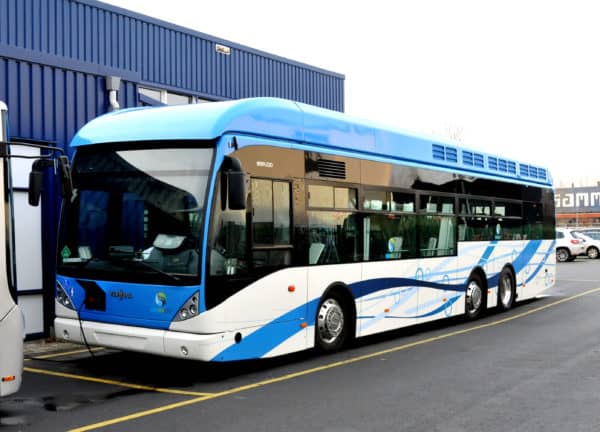
The drop-off has been huge for Canadian fuel cell innovator Ballard Power (Ballard Power Stock Quote, Charts, News, Analysts, Financials TSX:BLDP) which has lost about 46 per cent of its value since the start of the year, and while investors may be wondering where the bottom is on this one, that might be the wrong question, since it’s timing around the technology that’ll determine where Ballard is headed. So says portfolio manager Teal Linde, who argues that the fuel cell industry still has some question marks around it.
Burnaby, BC’s Ballard Power has been around long enough to see the market’s interest in green tech, batteries and electric vehicles wax and wane over the years, with the fad-prone nature of the beast sometimes favouring stocks like BLDP and sometimes not. But the latest wave was a biggie, where names across the board saw their share prices rocket as interest built up from about 2018-19 onwards, sparked by investors hoping to grab a piece of the global transition away from fossil fuels, fascination in Elon Musk, Tesla and the electric car’s ascendency and also technological advances that have been pushing the industry forward.
All that led to Ballard delivering more than a double in both 2019 and 2020 and heading for higher at the start of 2021. The stock went from about four bucks a pop to C$30 by January of last year and as high as C$52 per share a month later. But February, 2021, was a turning point for more than a few stocks, as the whole green tech field started to tumble. Renewable energy stocks plummeted, for example, including solar companies and names in renewable natural gas. And so did Ballard, shedding much of its previous gains in a matter of months and then tailing off over the intervening period. Now, the stock sits at around C$8.50.
But even though it’s been a long way down, Linde says the bright side is that companies like Ballard were able to pad their balance sheets with equity raises during the good times. Ballard, for instance, completed share offerings in November, 2020, and February, 2021, for $402.5 million and $550 million, respectively.
“The revenues for Ballard aren’t that large, around $100 million-plus,” said Linde, president of the Linde Equity Fund, who spoke on BNN Bloomberg on Monday. “It had a massive rally about a year ago. The whole battery industry and electric vehicles ran up then, with Plug Power being another one, and it gave these companies an opportunity to raise a lot of money at much higher share prices, which is great because it’s going to allow them to continue to do their R&D.”
“I don’t really follow too closely, but the last time I looked at it they’re on the cusp of having prototypes and trial projects with different heavy duty movers [but] I think people are wishing and waiting for these to really become commercialized and move beyond the prototype stage,” he said.
Ballard, which concentrates on the heavy transport and backup power markets and sells its fuel cell modules to buyers across North America, Europe and Asia, hasn’t exactly lit it up sales-wise. The company ended 2021 with revenue basically flat year-over-year at $104.5 million, even as its Power Products division saw a 16 per cent increase on the back of upticks in heavy-duty module shipments in North America and Europe. (All figures in US dollars except where noted otherwise.)
The first quarter 2022 saw revenue rise by 19 per cent to $21.0 million, with a 41 per cent increase in Power Products sales, including modules bound for stationary power generation.
But the coffers are still very full for Ballard, which ended the Q1 with $1.1 billion in cash reserves, with President and CEO Randy MacEwan saying in a May 9 press release that the money will allow Ballard to execute on its growth strategy.
“Our escalated investment is consistent with our outlook as we increase our spending on talent, technology, products, capabilities, and customer experience. We are confident investing ahead of the curve will position the company for significant market share as the adoption of hydrogen accelerates over the coming years,” MacEwan said.
Beyond Ballard, the fuel cell versus lithium ion battery contest continues, with the latter ruling the day at least for now, although many of the world’s car companies nonetheless have investments in fuel cells as part of their electrification strategy. For Linde, the big hold-up for the technology is the lack of infrastructure in terms of fuelling stations across the map to support people and companies buying into the fuel cell movement.
“On an industry-wide scale, there’s always a debate as to whether the fuel cell technology is going to have a chance to compete against [lithium ion] electrification. And because electric vehicles has really taken off and the fuel cell hasn’t, one of the challenges I hear is that the fuel cell infrastructure just isn’t there yet and that’s going to be required for commercialization to really take off. So, it’s still a work in process,” Linde said.
“[But Ballard] has the resources to keep forging ahead and so we continue to keep an eye on it to see whether or not commercialization is going to start to really kick in,” he said.





 Share
Share Tweet
Tweet Share
Share




Comment